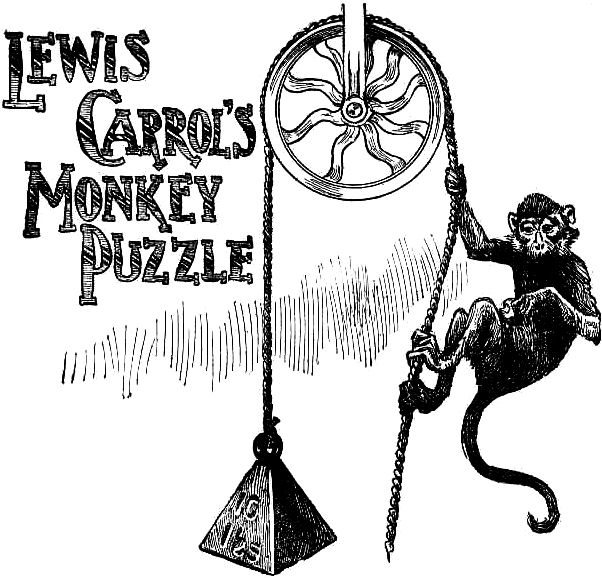



HERE IS A QUAINTLY told problem in mechanics, which, despite its apparent simplicity, is said to have caused Lewis Carroll considerable disquietude. Whether the famous author of "Alice in Wonderland'' who was an Oxford professor of mathematics was the originator of the problem is not known, but in an evil hour, as mentioned in a recent paper upon his writings and doings, he asked for information upon the following subject:
“If, to a rope, passed over a loose pulley, is suspended a ten-pound counter weight, which balances exactly with a monkey eating an apple, swinging at the other end, what would be the result if the monkey at tempts to climb the rope? ”
“It is very curious, ” says Lewis Carroll, “to note the different views taken by good mathematicians. Price says the weight goes up with increasing velocity. Both Clifton and Harcourt maintain that the weight goes up at the same rate of speed as the monkey; while Sampson says that it goes down. ”
A distinguished mechanical engineer says “it would have no more effect than a fly crawling up a rope'” while a scientist claims that “the weight would rise or lower, according to the inverse ratio of the speed with which the monkey ate the apple,” from which, however, should be extracted the square root of the monkey's tail. Seriously speaking, it is a pretty problem, and, as the principle of Lewis Carroll's monkey puzzle has become a much-discussed problem, worthy of serious consideration, it is presented to illustrate the intimate relationship between puzzles and mechanical problems. It is a well-known fact that the study of puzzles of any kind gives one a clear insight into the principles of mechanical laws or natural philosophy.
In theory the problem appears to be about as paradoxical as a recent, conundrum which is going the rounds as to what is it that will go up a chimney down or down a chimney down, but will not go up a chimney up nor down a chimney up? (An umbrella. )
There are three possible consequences to select from in the monkey problem: The progress of climbing might have no effect whatever upon the equilibrium; it might cause the weight to fall, which would raise the monkey quicker than he wished, or it might raise the weight, which would be apt to give the monkey a tumble. From the standpoint of a guess, pure and simple, opinions were about evenly divided, so two out of three were wrong in their conclusions.
From a theoretical and scientific point of view it is just as paradoxical as the umbrella conundrum, for if the monkey goes up he will go down, whereas if he goes down he will go up. The argument is based on Newton's law that “action is equal to reaction.” The engine which moves a train is pulling itself along by the rails. Theoretically speaking, if there was no friction, a fly could not crawl up that rope without destroying the equilibrium, so that the rope would be drawn over the pully and the monkey end fall by a rapidly increasing momentum.
2. For Bible-Students.
If the children slain in Herod’s Slaughter of the Innocents were buried in sand with but the right foot showing, how could you tell the girls from the boys?
This has puzzled many theologians, but the answer is simple: Only boys were slaughtered
[Page 44]